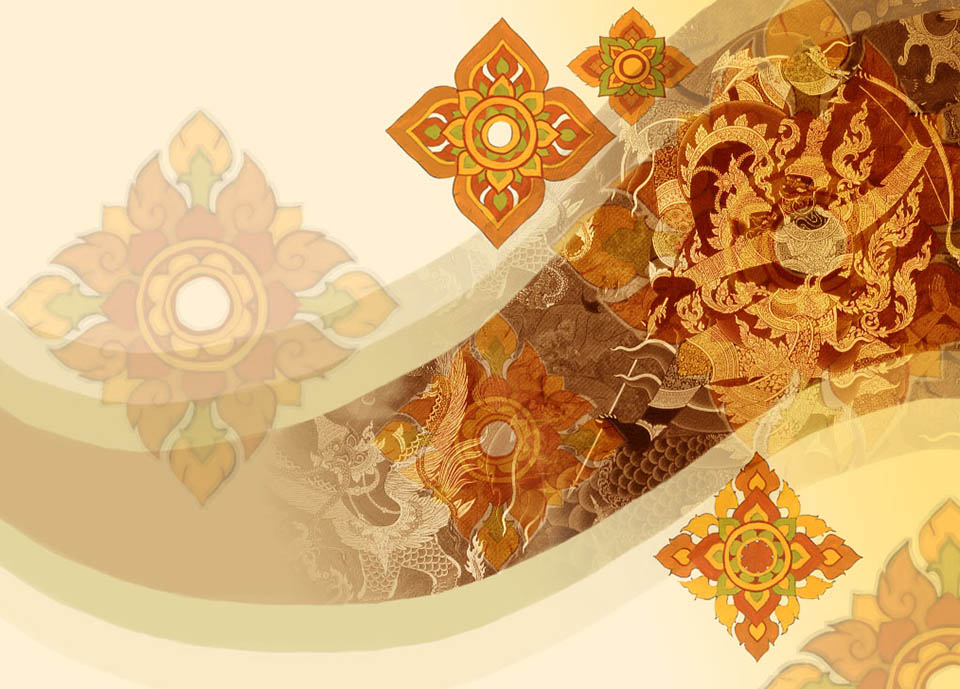“Dhamma” in Pali, meaning “Nature”, or, “the way things really are”. The study of the Dhamma consists of the renunciation of the causes of suffering and rebirth in illusory existences and realm, in order to escape the suffering that is inherent in all incarnate lifeforms by not havng to ever return. This is acehived by attaining what has come to be known as “Enlightenment”, or “Sainthood” (Arahantship).
Dhamma is a technique for self transformation and self liberation (from suffering and eventual rebirth into further states of unsatisfactoriness (suffering/dhukka) Dhamma practise is applied on the basis of contemplation, renunciation and devotional practise whilst maintaining the precepts (either 5, 8, 10 or 227), and applying one’s life to the Eightfold Path as taught by the Buddha Sakyamuni. The liberated state (known as Arahantship whilst still alive, and Nirvana when cessation has occured), is attained by practising various techniques of what is now referred to as “Mindfulness meditation” or “Vipassana/Kammathana” practise. The word Vipassana means to develop the mind, or to develop the perception. Kammathana is a phrase which begin to be used more commonly in Thailand by the Forest Tradition Monks of the Tudong lineage of Ajarn Mun and Ajarn Chah. Kamma, meaning “action”, or “behaviour” and Thana meaning “basis” or “base”.
Bhikkhu Bua Nanasampanno (Ajarn Maha Bua Probably the only living student of the Master Ajarn Mun Bhuridatto, the founder of the Kammathana Ascetic tradition. Ajarn Pra Maha Bua Nanasampanno, is well known for the fluency and skill of his Dhamma talks, and their direct and dynamic approach. He was the abbot of Wat Pah Bahn Tahd in Udon Thani, Thailand, until his passing in 2011.
Here is Wikipedia’s explanation of the word Kammathana;
In Buddhism, Kammathaana is a Pali word (Sanskrit: karmasthana) which literally means the place of work. Figuratively it means the place within the mind where one goes in order to work on spiritual development. More concretely, it refers to the forty canonical objects of meditation (samatha kammathaana), listed in the third chapter of the Visuddhimagga.
The Kammatthana collectively are not suitable for all persons at all times. Each kammatthana can be prescribed, especially by a teacher (kalyaana-mitta), to a given person at a given time, depending on the person’s temperament and state of mind.
The path to becoming an Arahant is preceded by 3 other stages, known as Sotapanna, Sakitakami, Anakami (and fourthly; Arahant). The Sotapanna state is known as “stream enterer”, Sakitakami is known as “Once returner”, Anakami as “Never Returner” and lastly the Arahant status (direct entry into Nirvana upon cessation of the five khandas). These 4 states are considered to be all states of “Noble Beings” – the four kinds of Noble persons are subclassified into 8; 4 path states and four “fruit” states.
Path means that one has not attained the state yet, but that one has entered into the way leading to the attainment of that state (fruit state) The most important goal for any serious Buddhist is to acheive as a minimum condition, the Sotapanna state (stream enterer). This is due to the fact that once attainment of stream entry is acheived, one is safe from danger of being reborn as a hell being, asura, peta, or animal. The Sotapanna will only be reborn as a Human Being or in the Celestial Realms as an Angelic Intelligence or a Brahma What is Dhamma? The Dhamma is the doctrine, or Teaching, way, of the Bhuddha. Dhamma also means “nature” or “the way things really are”.
The Dhamma is a path of practise that leads to wisdom and liberation from suffering. One’s understanding of Dhamma becomes ever deeper and profound as one advances along the path, old lessons revealing new truths as one develops deeper insight and understanding of Dhamma; “Just as the ocean has a gradual shelf, a gradual slope, a gradual inclination, with a sudden drop-off only after a long stretch, in the same way this Doctrine and Discipline (Dhamma-Vinaya) has a gradual training, a gradual performance, a gradual progression, with a penetration to gnosis only after a long stretch”. The basic gist of practising Dhamma is to Mindfully practise meditation, learn and teach Dhamma as one has understood it, and combine it with the moral principles of Sila (precepts), and to use these tools to live according to the principles of the Noble Eightfold Path..
